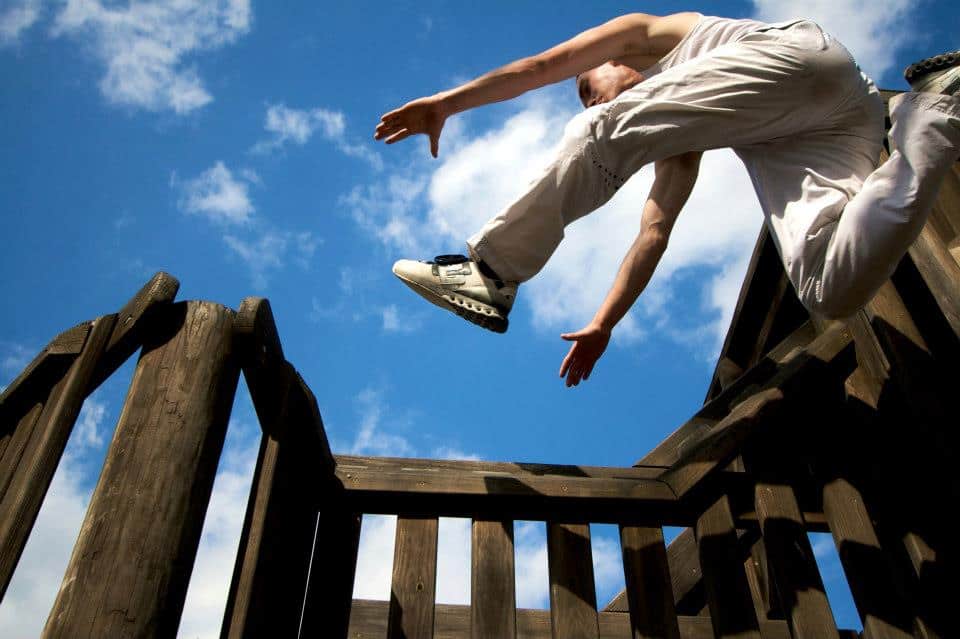While you hear the term “flow” thrown around a lot in Parkour, it is an aspect of movement that can be elusive without targeted practice. This series aims to clear up some of the misunderstandings that exist around conservation of momentum and along the way I’ll be giving you some tools that you can integrate into your training or teaching to help find your flow in every moment.
Fluidity(or flow) is simply conserving your momentum while moving through an environment. This skill is important not only in moving fast, but also when mixing complex acrobatics in with your movement. It is imperative that the energy loss between each movement is minimal so that you can have the greatest chance of success and safety in your training.
Macro-transitions are how well you conserve your energy for the “In Between”: the spaces between the movements that are in your line.
For part 1 of Finding Flow we will be talking about how macro-transitions can aid us in fluidity. Macro-transitions are how well you conserve your energy for the “In Between”; the spaces between the movements that are in your line. The goal with focusing on our Macro-Transitions is to help ensure the least amount of energy loss for the In Between. Generally when I think of Macro-Transitions I break the concept down into Steps, Entry/Exit, and Adaptation.
Once you understand these parts of your Macro-Transitions you should have no trouble improving the efficiency of the In Between. The goals here are to work on step length/consistency, techniques for stopping stutter steps and the importance of ambidexterity.
Step Length – “The Goldilocks Rule”
The key here is for your steps in between each movement to be “just right”.
(Blonde wig a plus but not necessary.)
Pay attention to the distance of your steps (which will vary depending on speed) and ensure that you are keeping them as evenly metered as you can.
If your steps are too small or too large you will not be able to maximize the energy transfer from one movement to the next. Play with this concept so you can find your preferred step length with different speeds and set ups.
Step Consistency – Preempting a stutter step
Preventing a stutter step is going to be one of the main things that will improve your flow. To develop this you need to practice and develop your awareness of which foot will arrive at any given location. When walking from place to place you can give your best guess for what foot will land on a marker (like a crack in the ground, curb, etc.) and see how well you are able to guess which foot naturally will arrive there.
Train your step consistency at different speeds, with different obstacles, and different approaches so that your mind can build up the awareness and feeling of which foot will be your last step. While developing your step awareness you can begin to add these next tools for stopping stutter steps. Which tool you will use will depend on your preference and whether you are doing a single move (like a wall run or running jump) or multiple moves (like in a run).
Stopping Stutter Steps
The Goldilocks rule is a great introduction into further awareness for the in between but what if your perfectly metered steps lead you to the “wrong” foot? This is where we talk about the stutter step. A stutter step is one or multiple steps that are generally of a smaller length that may occur while approaching a movement. Train your step consistency so that your mind can build up the awareness and the feeling of which foot will be your last step.

